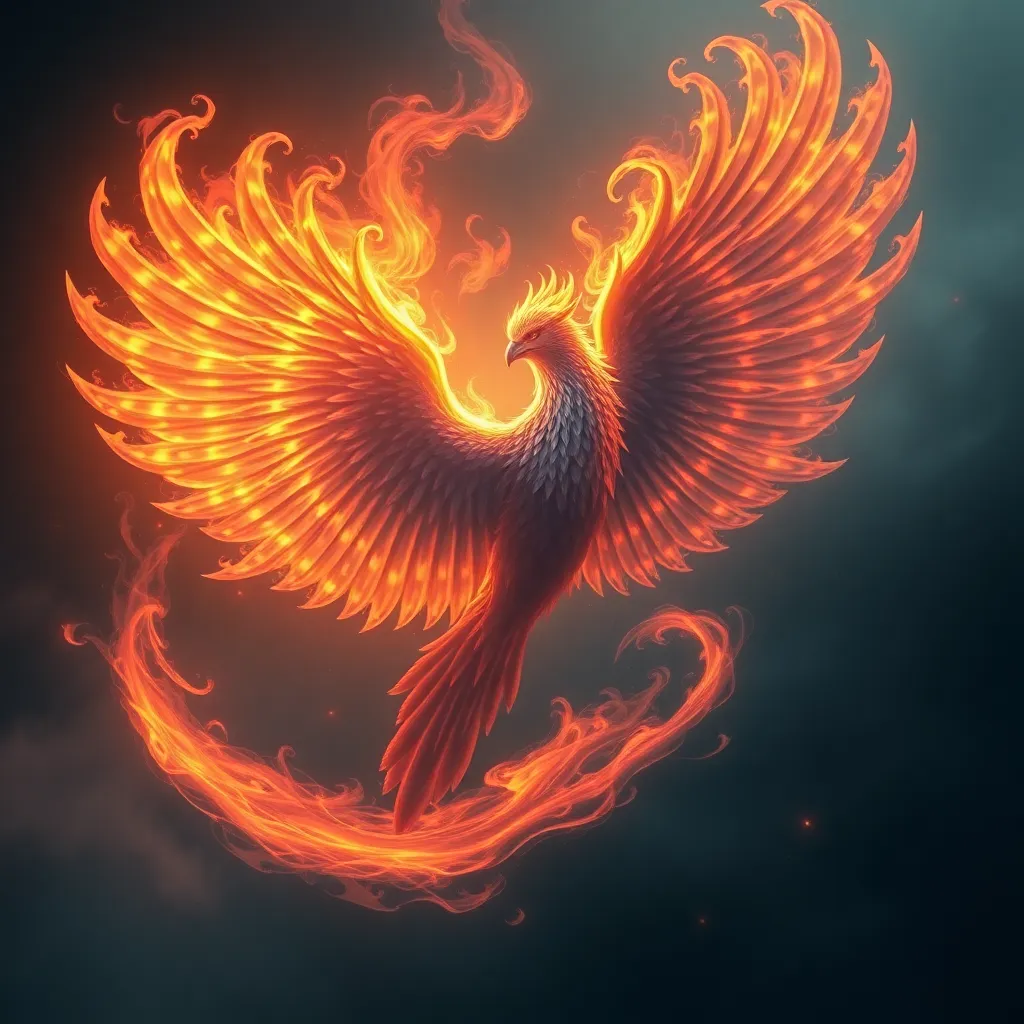The Firebird’s Power in Literature: From Ancient Texts to Modern Novels
I. Introduction
The Firebird, a mystical creature from Slavic folklore, has captivated audiences for centuries. This enchanting bird, often depicted as a symbol of beauty and magic, holds a significant place in various literary traditions around the world. Its vibrant plumage and enigmatic tales resonate with themes of transformation, freedom, and resilience, making it a powerful literary symbol across cultures.
Throughout history, the Firebird has transcended its folkloric origins, influencing not only literature but also music and art. It embodies the spirit of hope and renewal, reflecting the human experience in profound ways. This article explores the Firebird’s journey through ancient texts, its emergence in Russian literature, its adaptations in music and ballet, and its relevance in modern storytelling, ultimately highlighting its enduring power as a symbol in literature.
II. Origins of the Firebird in Ancient Texts
A. The Firebird in Slavic Folklore
The Firebird originates from Slavic folklore, where it is often portrayed as a magical creature that brings both blessings and challenges. In many tales, the Firebird is sought after by heroes on perilous quests, symbolizing unattainable beauty and the pursuit of the extraordinary.
B. Analysis of Early Literary References
Early references to the Firebird can be found in various Slavic narratives, where it frequently appears as a catalyst for change. The creature’s capture often leads to a series of trials that test the hero’s courage and wisdom. These stories highlight the duality of the Firebird—while it represents beauty and wonder, it also embodies the complexities of desire and ambition.
C. Symbolism Associated with the Firebird in Ancient Narratives
In ancient texts, the Firebird symbolizes:
- Transformation: Characters often undergo significant personal growth when interacting with the Firebird.
- Hope: The Firebird’s elusive nature symbolizes the hope for a better future.
- Conflict: The quest for the Firebird often leads to conflict, reflecting the struggles inherent in human desire.
III. The Firebird in Russian Literature
A. The Firebird in Alexander Pushkin’s Works
One of the most notable literary representations of the Firebird is found in the works of Alexander Pushkin. In his poem “The Tale of the Golden Cockerel,” the Firebird serves as a pivotal figure, intertwining themes of fate and destiny. Pushkin’s portrayal reflects the complexities of the human condition, emphasizing the interplay between desire and consequence.
B. The Significance of the Firebird in Russian Fairy Tales
The Firebird is a recurring character in Russian fairy tales, often revered for its magical abilities. These tales emphasize the importance of courage and resourcefulness, as characters must navigate treacherous paths to capture the bird. The Firebird’s magical feathers can grant wishes or bring fortune, illustrating the theme of reward for perseverance.
C. The Role of the Firebird in Shaping National Identity
The Firebird has become a symbol of Russian cultural identity, representing the nation’s rich folklore and artistic heritage. It embodies the spirit of resilience and the quest for beauty, making it a powerful emblem in the context of Russian literature and beyond.
IV. The Firebird in Music and Ballet
A. Igor Stravinsky’s “The Firebird” and Its Cultural Impact
Igor Stravinsky’s ballet “The Firebird,” premiered in 1910, brought the mythical creature to the forefront of the musical world. This groundbreaking composition not only showcased Stravinsky’s innovative style but also reinterpreted the Firebird’s narrative through the lens of music. The score captures the essence of the Firebird’s magic, transforming the tale into a vibrant auditory experience.
B. The Adaptation of the Firebird Story in Ballet
The ballet adaptation of the Firebird story highlights themes of love, bravery, and sacrifice. The choreography brings the narrative to life, allowing audiences to experience the emotional depth of the characters’ journeys. The visual representation of the Firebird’s beauty and power adds another layer to its symbolism.
C. How Music and Dance Reinterpret the Firebird’s Narrative
Through music and dance, the Firebird’s narrative is reinterpreted, emphasizing its themes of transformation and redemption. The ballet serves as a reminder of the timeless nature of myths and their ability to resonate across different artistic forms.
V. The Firebird in Modern Literature
A. Contemporary Authors Who Draw Inspiration from the Firebird
Numerous contemporary authors have drawn inspiration from the Firebird, incorporating its symbolism into their works. Writers such as Patricia A. McKillip and Anne Rice have reimagined the tale, exploring new themes and contexts that reflect modern society’s struggles and aspirations.
B. The Evolution of the Firebird’s Symbolism in Modern Novels
In modern literature, the Firebird’s symbolism has evolved to encompass a broader range of meanings. It often represents:
- Rebirth: Characters may experience a transformation akin to the mythical bird rising from the ashes.
- Individualism: The Firebird can symbolize the quest for personal freedom and self-expression.
- Environmental themes: Some authors use the Firebird to address ecological concerns, linking its beauty to the fragility of nature.
C. Case Studies of Specific Modern Works Featuring the Firebird
Several modern works feature the Firebird as a central motif, including:
- “The Firebird” by Susanna Clarke: This novel explores the intersection of magic and reality, drawing on the Firebird’s transformative power.
- “Firebird” by J.M. McDermott: A unique interpretation that intertwines the Firebird’s mythology with contemporary themes of love and loss.
VI. Thematic Analysis of the Firebird’s Power
A. Themes of Transformation and Renewal
One of the most prominent themes associated with the Firebird is transformation. Characters who encounter the Firebird often undergo significant changes, reflecting the notion that beauty and magic can lead to personal growth and renewal.
B. The Firebird as a Symbol of Freedom and Hope
As a symbol of freedom, the Firebird represents the desire to break free from constraints. Its flight embodies the hope for a better future, inspiring characters and readers alike to pursue their dreams despite obstacles.
C. The Firebird in the Context of Personal and Societal Struggle
The Firebird’s narrative often mirrors personal and societal struggles, highlighting the complexities of human existence. Its presence can serve as a reminder of resilience in the face of adversity, urging individuals to embrace their challenges as opportunities for growth.
VII. Cross-Cultural Interpretations of the Firebird
A. Comparisons with Similar Mythical Creatures in Other Cultures
The Firebird shares similarities with mythical creatures from other cultures, such as the Phoenix in Greek mythology and the Fenghuang in Chinese tradition. Each of these birds symbolizes rebirth and immortality, showcasing the universal themes of transformation and hope.
B. The Firebird’s Role in Global Literature
As a powerful symbol, the Firebird has found its place in global literature, resonating with diverse audiences. Its stories transcend cultural boundaries, illustrating the common human experience of longing, aspiration, and renewal.
C. How Cultural Perspectives Shape the Narrative of the Firebird
Cultural perspectives play a significant role in shaping the narrative of the Firebird. Different interpretations emphasize various aspects of its symbolism, reflecting the values and beliefs of the cultures that tell its stories.
VIII. Conclusion
The Firebird has proven to be a significant literary symbol, transcending time and cultural boundaries. From its origins in Slavic folklore to its adaptations in modern literature and art, the Firebird embodies themes of transformation, hope, and resilience. Its ongoing relevance in contemporary storytelling underscores the power of myth and the human desire for beauty and meaning.
As we continue to explore the narratives surrounding the Firebird, we are reminded of the enduring nature of myths and their ability to inspire and connect us across generations. The Firebird’s legacy will undoubtedly continue to evolve, reflecting the ever-changing landscape of literature and culture.



